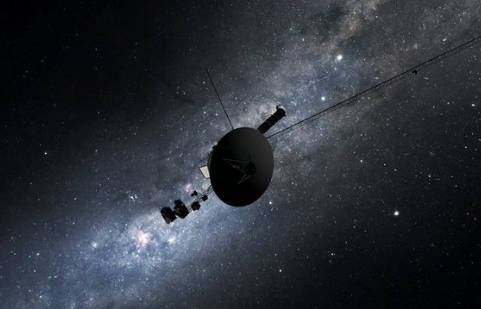This is the little engine that could. Many times now we have lost contact with Voyager. So far it has always managed to again send messages back to Earth.
The Voyager 1 spacecraft, humanity’s most distant messenger, recently faced what many feared could be a terminal setback. Launched over four decades ago, this venerable probe has traveled farther from Earth than any other human-made object. Its journey through the cosmos has not been without challenges, especially as it operates on dwindling power reserves. However, the latest reports bring a sigh of relief to those monitoring its progress: Voyager 1 has recovered from its near-death experience, with all four of its remaining scientific instruments now back online.
The primary mission of Voyager 1 was completed 43 years ago, after which, to conserve the limited energy supply, five of its original instruments, including the onboard cameras, were disabled. Over the years, two additional instruments failed, leaving only the magnetometer (MAG), low energy charged particle instrument (LECP), cosmic ray subsystem (CRS), and the plasma wave subsystem (PWS) operational. These instruments recently resumed normal function, a testament to the resilience of the spacecraft and the ingenuity of its Earth-bound support team.
Voyager 1 still doing science almost half a century on. https://t.co/4Eq5OF6DAY
— Matthew Malthouse (@calmeilles) June 15, 2024
The recent scare began when Voyager 1 started sending back anomalous data, indicating a malfunction that could potentially end its epic mission. The problem was significant enough to cause concern among the scientific community and space enthusiasts alike, who have been keenly following the spacecraft’s journey since its launch in 1977. However, the Voyager team, a group of engineers and scientists dedicated to the mission, managed to diagnose and rectify the issue, restoring the flow of scientific data.
The current focus for the team is on maintenance and system checks to ensure the continued health of the spacecraft. This includes resynchronizing the onboard time and performing necessary upkeep on the digital tape recorder. These steps are crucial for maintaining the integrity of the data collected and ensuring that the spacecraft remains in communication with NASA’s Deep Space Network.
https://t.co/5Jz9x0VQTr https://t.co/PUmYj3yfu6🚀 Amazing news! Voyager 1 is fully operational again, returning data from all 4 instruments! Get the exciting details in our latest post. #NASASpacecraft #InterstellarExploration Read more: https://t.co/5Jz9x0VQTr
— Springblade Legs for Starship 🤟 (@steveMmattison) June 15, 2024
As Voyager 1 approaches its 47th anniversary this fall, it continues to be a source of invaluable scientific data and a symbol of humanity’s ambition to explore the unknown. The spacecraft’s journey into interstellar space provides insights not just into the nature of our solar system, but also into the broader universe.
The mission of Voyager 1 has been extended multiple times, pushing the boundaries of what was originally imagined for this intrepid explorer. Each piece of data it sends back to Earth is a piece of cosmic history, helping scientists to understand the magnetic fields, solar particles, and cosmic rays that exist in the vast expanse of space.
Voyager 1 returning science data from all four instruments https://t.co/uBbzMqCd5q @NASA #astronomy #aerospace pic.twitter.com/Lk4QGVTEgs
— Russell Manthy (@russellmanthy) June 15, 2024
Key Points:
i. Voyager 1, launched over four decades ago, recently recovered from a critical malfunction, restoring all four of its remaining scientific instruments.
ii. The spacecraft’s primary mission ended 43 years ago, leading to the deactivation of five instruments, including the cameras, to conserve power. Since then, two additional instruments have failed.
iii. The restored instruments include the magnetometer (MAG), low energy charged particle instrument (LECP), cosmic ray subsystem (CRS), and plasma wave subsystem (PWS).
iv. Current maintenance efforts focus on resynchronizing the onboard time and servicing the digital tape recorder to prepare for Voyager 1’s upcoming 47th anniversary.
v. Voyager 1 continues to provide valuable scientific data from interstellar space, contributing to our understanding of cosmic phenomena and demonstrating the resilience and longevity of space exploration missions.
Kirk Volo – Reprinted with permission of Whatfinger News



